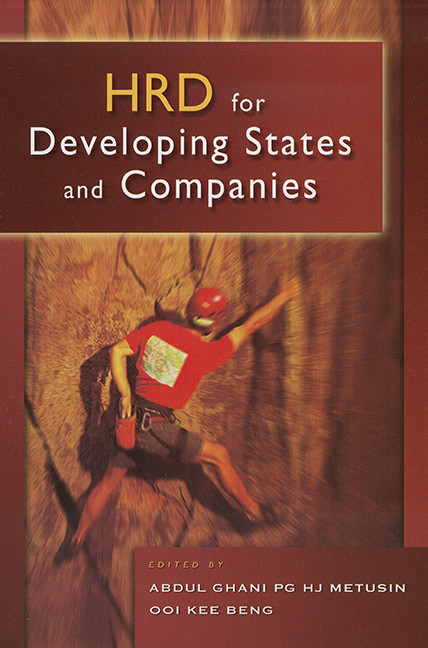Book contents
- Frontmatter
- Contents
- Foreword
- Preface
- Editorial Remarks
- Acknowledgements
- Introduction
- HRD for Statesmen
- HRD Strategies for Companies
- 7 Crafting and Implementing a Strategic HR Programme
- 8 Enhancing Human Capital in the New Economy
- 9 Competency Development for Superior Performance
- 10 Leading with Emotional Intelligence
- 11 Diversity in Work-Life Programmes
- 12 Strategic HR — Making Do or Doing More?
- Competence Development
- Corporate Experiences
- About the Authors
9 - Competency Development for Superior Performance
from HRD Strategies for Companies
Published online by Cambridge University Press: 21 October 2015
- Frontmatter
- Contents
- Foreword
- Preface
- Editorial Remarks
- Acknowledgements
- Introduction
- HRD for Statesmen
- HRD Strategies for Companies
- 7 Crafting and Implementing a Strategic HR Programme
- 8 Enhancing Human Capital in the New Economy
- 9 Competency Development for Superior Performance
- 10 Leading with Emotional Intelligence
- 11 Diversity in Work-Life Programmes
- 12 Strategic HR — Making Do or Doing More?
- Competence Development
- Corporate Experiences
- About the Authors
Summary
INTRODUCTION
Almost every company says people are the most important resource but everyone agrees that it is extremely difficult to put a tangible value on people'scontribution towards the bottom line. The common sense acceptance that people do create shareholder value has been difficult to prove in the absence of data.
Management experts contend that only 30% of market capitalization is due to physical assets. This then leads to the question of what it is that contributes to the remaining 70%.
Recently, Watson Wyatt Worldwide, a global consulting firm, released its Human Capital Index. The study demonstrated the link between superior human resource practices and the creation of shareholder value. If and when an organization implements good practices in the six key areas mentioned below, then positive financial outcomes follow.
SIX KEY AREAS
1 Ensuring the competence of employees whether by acquisition, deployment or development;
2 Managing talent;
3 Providing clear rewards and accountability;
4 Maintaining communications integrity;
5 Prudent use of human resources, and;
6 Focused use of technology in HR.
Here, the first two areas will be reviewed.
Throughout the Asia HRD Congress, experts have spoken about ideas and action strategies revolving around global HRD learning strategies, HR measurement, quality of work life, talent development and competency management. We have also heard the age-old maxim that change is a constant feature in an organization'slife.
As companies meet the challenges arising out of change, they have no choice but to focus on human capital, since that is the only source from which an organization can gain competitive advantage.
- Type
- Chapter
- Information
- HRD for Developing States & Companies , pp. 56 - 67Publisher: ISEAS–Yusof Ishak InstitutePrint publication year: 2005

